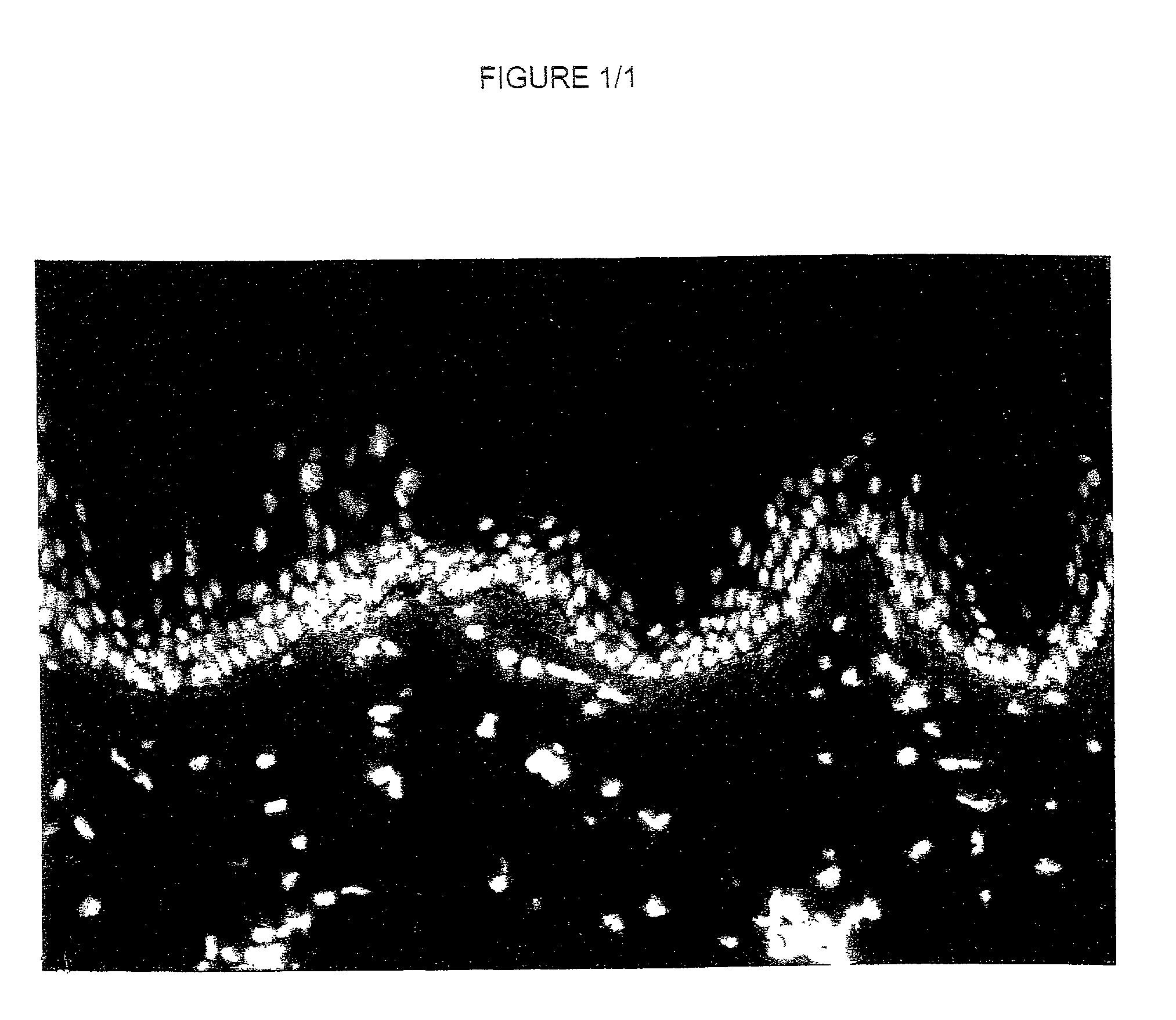Antibodies specific for papillary fibroblasts as markers for skin quality
- Summary
- Abstract
- Description
- Claims
- Application Information
AI Technical Summary
Problems solved by technology
Method used
Image
Examples
example
Immunological Labelling of Papillary Fibroblasts in Normal Skin
[0029] Samples of normal skin derived from plastic surgery were embedded in Tissue-Tek, frozen in liquid nitrogen and stored in a freezer at -80.degree. C. 4-micron-thick sections were prepared on a cryostat according to standard techniques. Labelling was performed using a conventional indirect immunofluorescence labelling technique (see Asselineau et al., J.I.D., 86, 181-186, 1986) with 20 ml per section of the PG4 monoclonal antibody in pure state (culture supernatant) (see Sorrell et al., The Histochemical Journal, 31, 549-558, 1999). 20 ml per section of an antibody directed towards mouse antibodies (mouse conjugate), obtained from the company Dako, were then placed on the sections and the sections were incubated according to the manufacturer's recommendation. After rinsing, the sections were contacted with a solution of PBS containing 0.5% propidium iodide, and then rinsed with PBS and mounted for observation under ...
PUM
 Login to View More
Login to View More Abstract
Description
Claims
Application Information
 Login to View More
Login to View More - R&D
- Intellectual Property
- Life Sciences
- Materials
- Tech Scout
- Unparalleled Data Quality
- Higher Quality Content
- 60% Fewer Hallucinations
Browse by: Latest US Patents, China's latest patents, Technical Efficacy Thesaurus, Application Domain, Technology Topic, Popular Technical Reports.
© 2025 PatSnap. All rights reserved.Legal|Privacy policy|Modern Slavery Act Transparency Statement|Sitemap|About US| Contact US: help@patsnap.com

